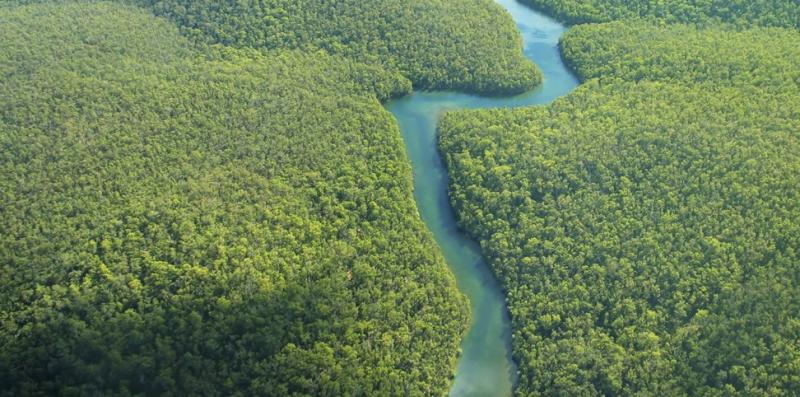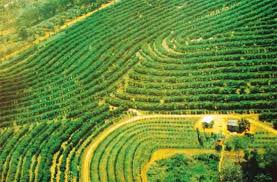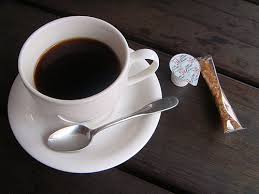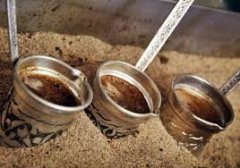History of the development of coffee beans in Brazil, a big coffee country in the world, the influence of Brazilian coffee characteristics on world coffee production
The charm of Brazilian coffee is not as good as the unrestrained, warm and earth-shaking samba dance and the carnival that cannot stir up the tip of the tongue, but Brazilian coffee is thoroughly integrated into the blood of Brazilians who are happy to know their fate, and it touches the heartstrings of coffee lovers with its colorful flavor. it has a long aftertaste.
An interesting historical story of Brazilian coffee

Originally, on more than 8.5 million square kilometers of land in Brazil, there is not a single coffee tree that does not produce coffee. The French specially shipped coffee saplings to French Guiana. In 1727, Brazil had a border dispute with its northern neighbor Guyana. Brazil's governor sent a delegation of military officer Francesco de Moro Barrieta (Frances code Melo palhata) to Guyana to negotiate a peaceful settlement of the dispute. At that time, French Guiana regarded coffee as a "national treasure" for fear of being taken away by neighboring countries, especially Brazil, which was worried about absolute military and economic dominance, so there were soldiers with guns patrolling around the coffee garden day and night. After Moro Barretta arrived in Guyana, the coffee garden was heavily guarded and heavily guarded to keep Moro Barretta and his party from approaching. However, the handsome young officer won the favor of the governor's wife, not only invited Moro Barretta to taste coffee as an exception, but also personally accompanied him to visit the coffee garden. The border negotiations failed, but he was given a handful of coffee beans and five coffee seedlings. The coffee introduced by Moro Barretta was planted on a trial basis in the backyard of the Government House and then planted on a small scale on a nearby farm. Is now the ancestor of nearly 4 billion Brazilian coffee trees. Moro Barretta also unexpectedly became Brazil's "father of coffee" and opened the beginning of Brazilian coffee culture.

In early Brazil, coffee started very slowly. It was only after Mr Moro Barreta returned to Brazil that coffee culture began in Para, at the mouth of the Amazon. About 1773, coffee was introduced from the north to Brazil's traditional agricultural areas on the southeast coast: Rio de Janeiro and Sao Paulo. As the climate here is very suitable for growing coffee, coupled with fertile land, cheap labor and other factors, coffee production in Brazil has developed rapidly. At the beginning of the 19th century, coffee was grown all over the country, followed by a coffee boom that lasted nearly a century. Coffee beans are also exported by ship from the port of Santos, and the right portion of Santos coffee has become the representative of Brazil.
There are about 220000 coffee plantations in Brazil; it covers an area of about 27000 square kilometers, mainly in the southeastern states of Minas Gerais, Sao Paulo and Parana. Minas Gerais accounts for about half of the country's coffee production. Most plantations across the country harvest during the dry season from June to September. Almost all coffee in Brazil is treated with "air-dried coffee". Coffee beans are dried in the sun for 8-10 days, then classified and packaged. Brazil has about 3.5 million people engaged in coffee cultivation, with a total annual output of about 3 million tons, accounting for about 1/3 of the world's coffee production, making it the largest coffee producer in the world.
For the past 150 years, Brazil has been the world's largest producer of coffee, which is widely sold in many countries around the world. It is the largest supplier in the international coffee market. The bumper harvest of its coffee will cause fluctuations in the international coffee market. Although the annual output of coffee beans in Brazil is abundant, coffee experts do not think highly of their beans, which are too monotonous, bitter, sour and fragrant enough to be included in the list of boutique coffee. Because most of the Brazilian coffee gardens have no shade at low altitude, the way of picking beans is rough, and the raw and ripe fruits are picked together, which does not meet the conditions of fine coffee. The Brazilian Coffee Association was established in 1991 to improve the quality of extremely hard beans comparable to those at high altitude, and with the assistance of the American Fine Coffee Association, the first Brazilian Coffee Competition (CoE_Cup of Excellence) was held in 1999. Over the years, the tester witnessed and coached the international cup, and the flavor gradually reached its peak and was known as the coffee kingdom. Although Brazilian coffee is not as bold and expressive as Brazilians, it is mild, sour and lively, and its refreshing and harmonious flavor can be comparable to that of the hermit in the coffee kingdom.

Brazil itself is the world's second-largest consumer of coffee. Brazil ranks 14th in per capita coffee consumption in the world. Brazilians are addicted to caffeine. They pour a strong cup of coffee with an elegant small porcelain cup, coupled with Brazilian-made refined candy bars, to drink sweet and delicious and refreshing. Coffee with hot milk is a traditional breakfast drink throughout Brazil. Brazilians call breakfast "morning coffee" (cafedamanha). Coffee is seen by Brazilians as a source of energy. Coffee should be dark, strong, mellow and delicious, and it is best to add a little more sugar. As the Brazilian folk song says, "Coffee must be as black as the devil, as hot as hell, as pure as an angel, and as sweet as love." When you arrive in Brazil, don't forget to taste the delicious "Coffee Sinio"! Because for most Brazilians, drinking coffee is a habit, a pleasure and a lifelong relationship.
Important Notice :
前街咖啡 FrontStreet Coffee has moved to new addredd:
FrontStreet Coffee Address: 315,Donghua East Road,GuangZhou
Tel:020 38364473
- Prev

Treacherous coffee divination the origin of coffee drinking in the first place.
The treacherous Turkish coffee [Turkish coffee], also known as Arabian coffee, is the ancestor of drinking coffee. Turkish coffee and its traditional culture are listed as the intangible cultural heritage of UNESCO. It is an incomparably noble etiquette for Turks to make a cup of traditional coffee for visitors, even fasting in advance.
- Next

You can't live without coffee-seven benefits that make you want a cup of coffee right away.
Professional baristas please follow the coffee workshop (Wechat official account cafe_style) Lesheng Beethoven personally mixes 60 coffee beans to make coffee every day, while Voltaire, the father of French thought, is said to drink 50 cups of coffee a day until he died at the age of 83! So is there really nothing wrong with coffee addiction? The foreign website "Brightside" has sorted out 7 things that you should
Related
- Beginners will see the "Coffee pull flower" guide!
- What is the difference between ice blog purified milk and ordinary milk coffee?
- Why is the Philippines the largest producer of crops in Liberia?
- For coffee extraction, should the fine powder be retained?
- How does extracted espresso fill pressed powder? How much strength does it take to press the powder?
- How to make jasmine cold extract coffee? Is the jasmine + latte good?
- Will this little toy really make the coffee taste better? How does Lily Drip affect coffee extraction?
- Will the action of slapping the filter cup also affect coffee extraction?
- What's the difference between powder-to-water ratio and powder-to-liquid ratio?
- What is the Ethiopian local species? What does it have to do with Heirloom native species?

